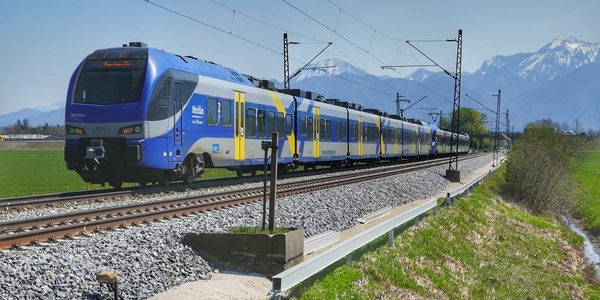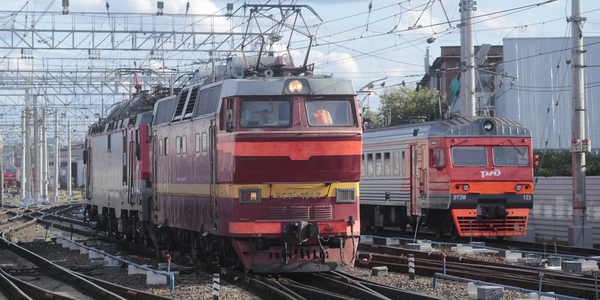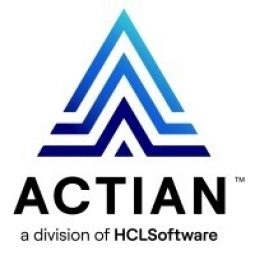Company Size
1,000+
Region
- America
Country
- United States
Product
- Versant Object Database
- RailEdge® Movement Planner
Tech Stack
- Object-oriented software system
- Database Management
Implementation Scale
- Enterprise-wide Deployment
Impact Metrics
- Cost Savings
- Environmental Impact Reduction
- Productivity Improvements
Technology Category
- Analytics & Modeling - Real Time Analytics
- Application Infrastructure & Middleware - Database Management & Storage
Applicable Industries
- Railway & Metro
Applicable Functions
- Logistics & Transportation
Use Cases
- Predictive Maintenance
- Real-Time Location System (RTLS)
Services
- Data Science Services
- System Integration
About The Customer
Norfolk Southern Railroad is a major transporter in the eastern United States. It operates 2,500 trains per day over a 21,000-mile system serving every major container port in the region. With the Federal Railroad Administration expecting railroad freight traffic to double by 2020, Norfolk Southern is faced with the challenge of meeting this demand without expanding its existing tracks. The company aims to increase railroad capacity, velocity, and efficiency, increase average network train speed by 10 to 20 percent, and save millions of dollars in capital and expense.
The Challenge
The Federal Railroad Administration is expecting railroad freight traffic to double by 2020. However, the U.S. railroad infrastructure cannot be expanded to keep pace with this demand. Railroads are confronted with meeting this demand in some other way. GE Transportation Systems, the global technology leader and supplier to the railroad industry, is addressing the problem with RailEdge® Movement Planner, an object-oriented software system incorporating the Versant Object Database. GE Transportation’s customer, Norfolk Southern Railroad, operates 2,500 trains per day over a 21,000-mile system serving every major container port in the eastern United States. Norfolk Southern expects to increase railroad capacity, velocity and efficiency with no new tracks, to increase average network train speed 10 to 20 percent, and to save millions of dollars in capital and expense.
The Solution
GE Transportation Systems, the global technology leader and supplier to the railroad industry, provided a solution with RailEdge® Movement Planner, an object-oriented software system incorporating the Versant Object Database. The Versant Object Database provides significantly higher performance with RailEdge’s complex object models than a relational database. Objects with moderate complexity perform three-times faster, while objects with high levels of complexity, many-to-many relationships, perform more than thirty-times faster. RailEdge replicates and modifies objects—a heterogeneous mix of data types images, maps, sensor data, financial information, etc.—continuously coming into the Versant Object Database. Using the same object model for the application and the database, VOD provides significantly higher performance with RailEdge’s complex object models than a relational database.
Operational Impact
Quantitative Benefit

Case Study missing?
Start adding your own!
Register with your work email and create a new case study profile for your business.
Related Case Studies.

Case Study
Building Smart IoT-Connected Railways
• Difficult environment. Communications equipment on trains must function properly in harsh conditions, such as environment temperatures ranging from -25°C to +85°C, according to the EU standard EN50155.• Railway regulations. All products in a train must adhere to strict standards, relating to working vibration, power consumption, and lifetime.• Lengthy process. Time to market in the railway industry can take years from concept to mass production, so product design requires a solid long term vision.

Case Study
Connected Transportation: A Smarter Brain for Your Train with Intel
A modern locomotive, for example, has as many as 200 sensors generating more than a billion data points per second. Vibration sensors surround critical components, video cameras scan the track and cab, while other sensors monitor RPM, power, temperature, the fuel mix, exhaust characteristics, and more.Most of today’s locomotives lack sufficient on-board processing power to make full use of all this data. To make matters worse, the data from different subsystems, such as the brakes, fuel system, and engine, remain separate, stored in isolated “boxes” that prevent unified analysis. The data is available, but the technology needed to process it in the most effective manner is not. As new sensors are added to the machine, the problem escalates.

Case Study
Using LonWorks to Keep Acela Trains Zip Along
Canadian transportation company, Bombardier was tasked with building a bullet train system on rails that were designed for lower speed trains. In addition, they had to ensure safe and optimal operation at high speeds, maximize train uptime and enhance communication with passengers.

Case Study
Delhi NCR Metro: A Mobile App Revolutionizing Public Transportation
The Delhi NCR Metro, a major public transportation system in India, was facing a challenge in providing accurate and comprehensive information to its daily commuters and tourists. The lack of a centralized platform for information about metro station details, train schedules, fare details, parking, elevators, and tourist locations was causing inconvenience to the users. The challenge was to develop a mobile app that could provide all this information accurately and conveniently. The app needed to be equipped with GPS services to help users find the nearest metro and renowned locations. An interactive map was also required to assist travelers who were familiar with the metro lines. The goal was to provide maximum information with minimum input.

Case Study
Automated Railcar Inspections Increase Security and Revenue
Providing industry and government customers with intelligent inspection, automation, safety, and security solutions, Duos Technologies Group, Inc. (“Duos” or the “Company” - Nasdaq: DUOT) continually pushes the boundaries of IT. To keep pace with expanding AI-enabled data capture analytics for its edge railcar inspections, the company chose the latest Dell EMC PowerEdge servers.Duos Technologies’ challenge was finding a way to leverage technology as a force multiplier to meet customer requirements for a better, faster inspection process for trains running at full speed. Duos developed innovative data analytic solutions with AI at the edge to conduct more reliable railcar inspections, which are available 24/7/365 in all climates and conditions.




